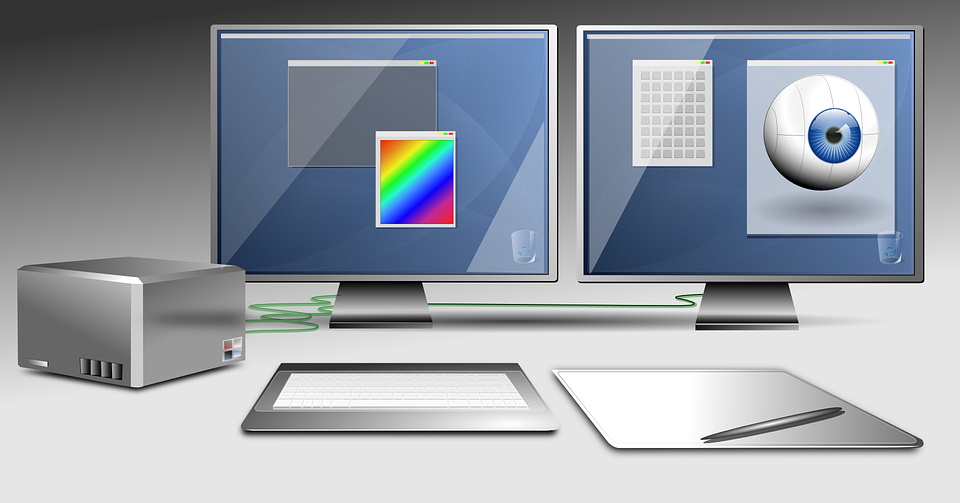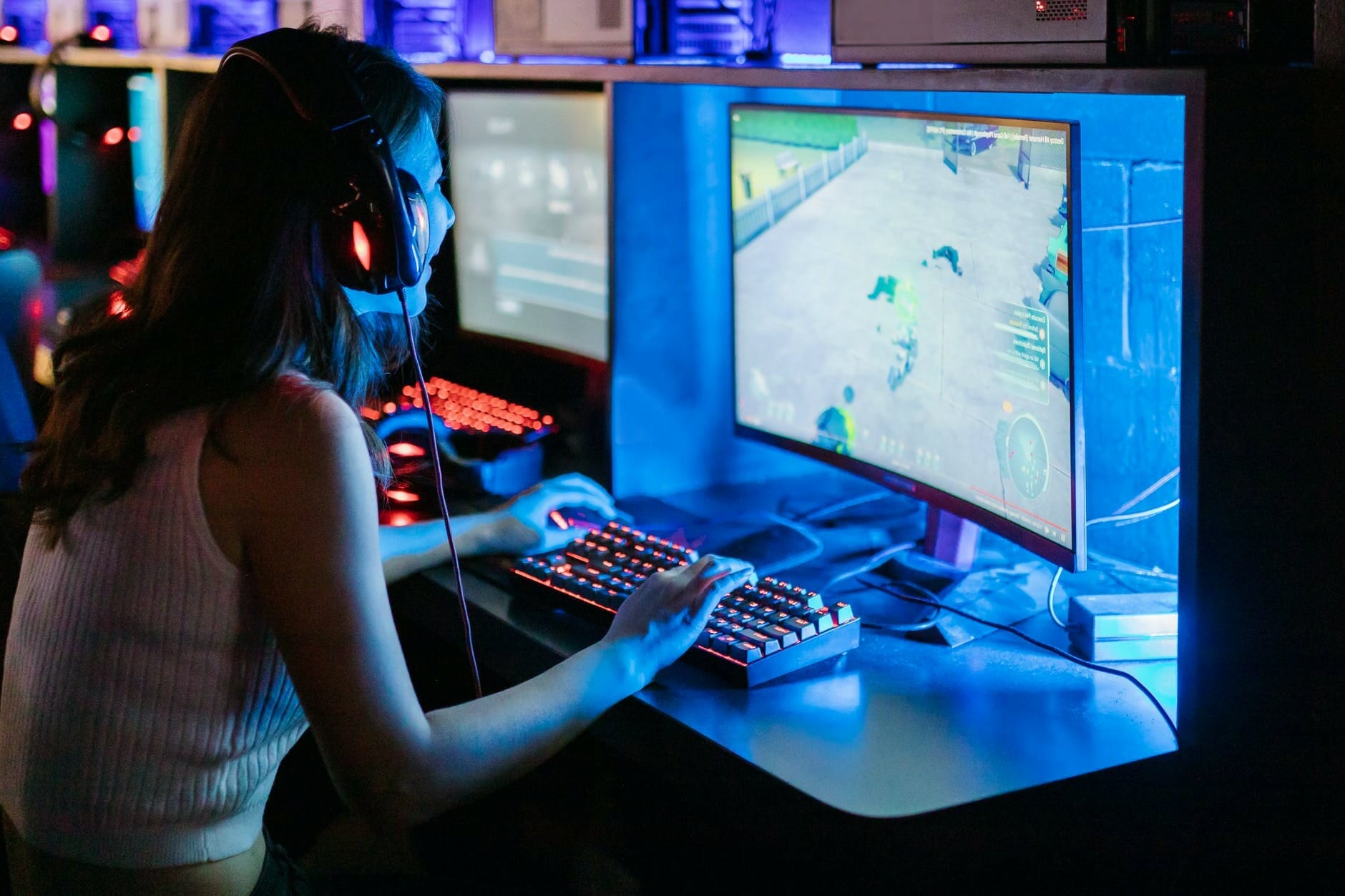Table of Contents
TV and monitor enthusiasts won't take chances on contrast ratio. To them, it is as vital as other specs of the monitor, TV, or any display device they purchase. You can buy the best TV with high screen resolution, but it produces different color shades. This condition comes down to the contrast ratio of the device in question.
The contrast ratio has two categories, static contrast ratio and dynamic contrast ratio. And if you are new to this, a monitor contrast ratio can be pretty confusing.
In this article, we've answered all the questions concerning contrast ratio. What they are, why they matter, and the best contrast ratio for your monitor.
Read through for more details.
What Is a Contrast Ratio?
The contrast ratio is the range between the brightness of the brightest white of a display and the blackest black. The brightness or luminance is the light intensity of a display interface. The unit for contrast ratio is candelas per square meter (ced/m²) or nits.
You can determine this contrast ratio by finding the ratio between the white luminance and the blacks.
The contrast ratio is what gives the display its standout character. It provides the display with different shades of black. The contrast ratio also gives the image display depth and detail. You're more likely to notice the contrast of the display in dark scenes when gaming or watching movies.
Luckily, you can calibrate your Windows or macOS device settings to attain the best contrast ratio.
Does the Contrast Ratio Matter?
Yes, contrast ratios do matter a lot.
In general, the higher the contrast ratio, the better the display quality. The integrity of the display you see depends on the range of brightness your eyes receive. This phenomenon is related to the electric signals your brain gets from the monitor.
High contrast ratios produce deep and detailed quality pictures. These pictures make the display more vibrant, real-life, and natural-looking.
Now, you know how worth the contrast ratio is in display quality.
In-Depth Review of the Contrast Ratio in Monitors
Most HDTVs have an average contrast ratio of 1000:1. What does this figure mean?
A 1000:1. Contrast ratio means the monitor has about 999 nits between the brightest white and the darkest black. This luminous range is what the monitor in question generates at default settings.
This monitor will have the following default settings.
- Brightness - 50
- contrast - 50
- Gamma -50-
- High contrast mode - OFF (Windows 10)
The contrast ratio figure for many monitors and TVs will extend to 3000:1.
Many manufacturers deceive their consumers by listing contrast ratios higher than 3000:1. You're called upon to practice due diligence when purchasing a new monitor.
Most "higher than 3000:1 contrast ratio" clauses in monitors are marketing gimmicks.
However, when analyzing the contest ratio of your new monitor, consider the ambient lighting. This light is the light from our surroundings coming directly to the monitor. Keep this light to the minimum as it can impact how you perceive the monitor's contrast ratio.

Is Dynamic Contrast Ratio the Same as Static Contrast Ratio?
No, the static contrast ratio is not the same as the dynamic contrast ratio.
The static contrast ratio is the widest range between the darkest black and the brightest white at a defined setting. This measurement is taken from the same picture and at the same time. The static contrast ratio is the actual contrast ratio of a monitor.
On the other hand, the dynamic contrast ranges between the darkest scene and the brightest whites taken from unidentical setting calibrations. This phenomenon means that the brightest white is determined from a light image on a bright mode, while the darkest black is taken from a dark image on the darkest mode.
You can't rely on a dynamic contrast ratio as it is not standardized. And yes, most manufacturers use the dynamic contrast ratio when listing monitor specs. In that regard, you'll find most LCD monitors with 10,000:1 contrast ratio tags and 10,000,000:1 contrast ratio tags in Asus and Acer monitors.
Isn't this weird, given that the best monitors have a contrast ratio range of 1000:1 to 3000:1?
Are There Factors Affecting Contrast Ratios?
Yes, there are factors affecting the contrast ratio.

Such factors are listed below.
- Display technology (Twisted Nematic panels, In-plane switching panels, Vertical alignment panels, and super vertical alignment)
- Display brightness setting
- Polarization treatment
- Ambient light conditions
Display Technology
Nothing beats the vertical alignment panels and super vertical alignment panels in contrast ratios regarding the display technology and probably the panel types.
The vertical alignment panels have liquid crystals aligned naturally to the glass, ensuring a more comprehensive contrast ratio range. These panels also have minimum light leakage; meaning prevents the backlights from reaching the deepest blacks. Its whites have better clarity and are uniform.
Display Brightness Setting
The display brightness determines the contest ratio integrity in the real action. It counters the surrounding lights' effect on the display. Calibrate the backlight luminance settings to match the display contrast calibration.
To enjoy the best contrast ratio experience, consider a monitor with high brightness levels of up to 5,000 nits. The high luminance counters the effect of ambient lighting.
Polarization Treatment
Glare and reflection of light to the screen affect contrast ratio. When ambient light hits the screen surface, it reflects into your eyes, disrupting your vision. A monitor with an anti-glare coating addresses the glare and reflection issues effectively. Also, ensure your room has minimum ambient and natural light striking the screen directly.
Ambient Light Conditions
Ambient light from the surroundings directed towards the monitor affects the contrast ratio. This light strikes the screen, scattering in all directions. The reflected light then strikes the eyes of the monitor used. This condition results in unclear image display due to lowered contrast quality.

LCD and OLED: Who Has the Best Contrast Ratio?
Liquid Crystal Display and Organic Light-Emitting Diodes panels have different structures. The two display technologies also have different contrast ratios.
How do their contrast ratios compare?
LCD monitors use liquid crystals having unstructured molecules. They expand and organize the molecules when exposed to electricity, making them have a higher dynamic contrast ratio.
On the other hand, the OLED monitors have tiny lights within a structured unit. This state makes the OLED monitor have a higher static contrast ratio.
Given that the static contrast ratio is the true contrast, it is evident that OLED monitors are better than LCD monitors in terms of contrast ratios.
Your preference matters, but if the contrast ratio is the differential or the determining factor, the OLED monitor best suits you.
What’s the Best Contrast Ratio for a Monitor?
The best contrast ratio should be a 3000:1 static contrast ratio. A 1000:1 static contrast ratio is also not a bad one. Note it should be a static contrast ratio, not a dynamic contrast ratio.
The current LED-backlit monitors automatically turn off pixel backlighting in dark scenes. This process ensures dark blacks. The range between the dark blacks and bright white also increases.
In general, the higher the contrast ratio, the more quality the display is - ensuring a vibrant display for an optimal experience.

What Are the Benefits of High Contrast Ratios?
Something of much concern as contrast ratio must have several benefits. So, what are they?
The benefits of a high contrast ratio are listed below.
- High contrast ratios make images more immersive.
- High contrast ratios make the display color brighter, ensuring they stand out.
- High contrast ratios allow you to spot the difference between shades of blacks in dark scenes, a crucial feature in gaming.
- It is easy to read from a screen with a high contrast ratio. Text and graphics display are detailed and accurate.
- High contrast ratio reduces eye fatigue and strain chances.
The high contrast ratio has comprehensive benefits, ranging from performance experience to your well-being.
Don't miss out on the contrast ratio check on your next monitor purchase!
FAQs
Is monitor contrast good for the eyes?
Yes, it's good for the eyes because high contrast is good for eyes because it makes it easier to distinguish objects from their backgrounds. It also helps with depth perception and color recognition.
What Is a Dynamic Contrast Ratio?
The dynamic contrast ratio ranges between the brightest display and the darkest display taken from unidentical setting calibrations.
Is a 1000:1 Contrast Ratio Good?
Yes, a 1000:1 contrast ratio is enough. This contrast ratio produces accurate, bright, and vivid images, improving the image quality. However, this contrast ratio must be static.
What Is Contrast Ratio?
The contrast ratio is the range between the luminance of the brightest display and the darkest display. The balance of their luminance gives the ratio.
Between Brightness and Contrast, Which One Should Be High?
The contrast ratio, the brightness, and the darkness are correlated. Saying so means that they should not have significant margins between them in calibrations. To achieve a more natural and realistic image display, you should balance contrast and brightness.


